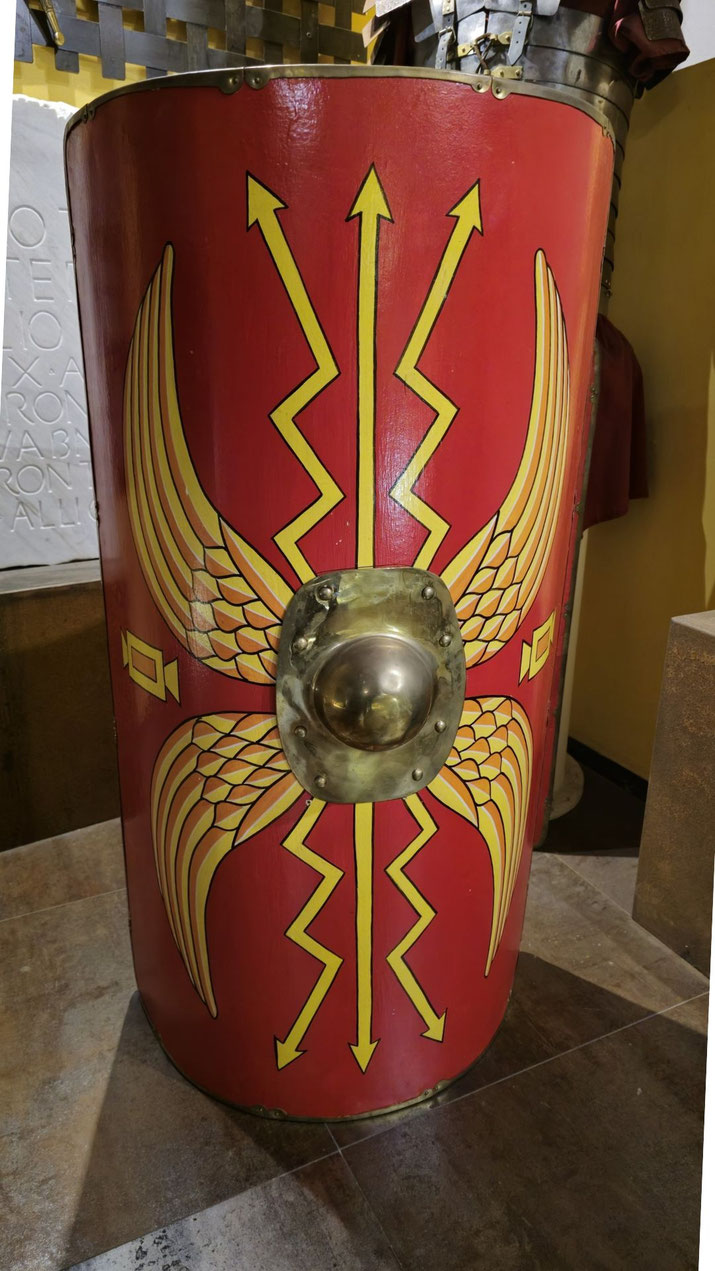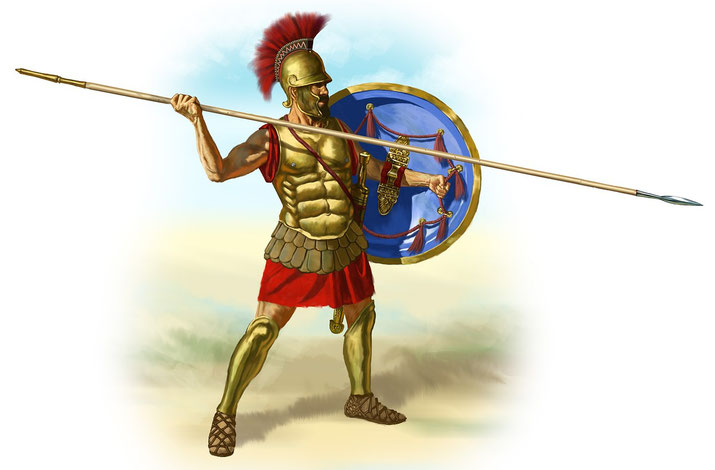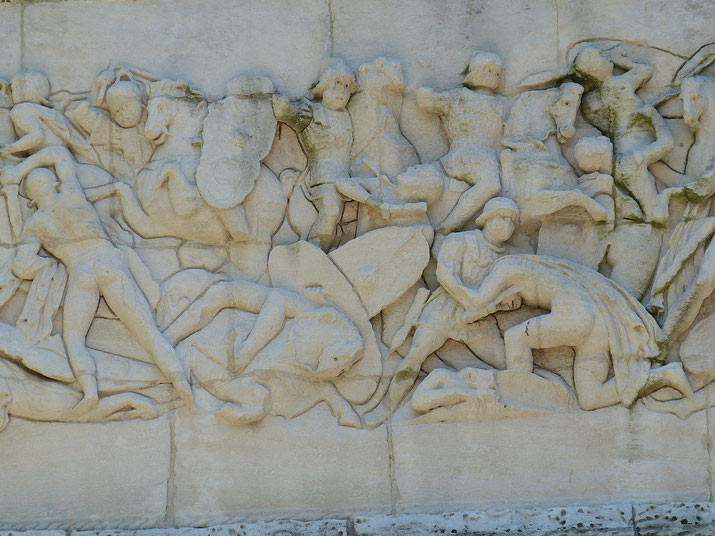The Great Debate: who would win if the Roman legions fought Macedonian phalanxes?

The ancient world was filled with powerful and formidable armies that shaped the course of history through their military might.
Two of the most renowned forces were the Roman legions and the Macedonian phalanx. Both were known for their disciplined and efficient tactics, as well as their well-trained soldiers.
It's natural to wonder which of these two forces would come out on top in a hypothetical battle.
What many people are surprised to learn is that the Romans did fight against phalanxes.
Here is what happened...
Contender 1: the Roman legions
The Roman legion was the primary military unit of the Roman army, which was one of the most successful military forces in history.
The legion was a flexible and adaptable military formation that evolved over time, but typically consisted of between 4,000 and 6,000 soldiers, called legionaries.
The legionaries were well-trained and heavily armored, with each soldier equipped with a short sword called a gladius, a rectangular shield called a scutum, and often a javelin called a pilum.
The legion also included a variety of auxiliary troops, including archers, cavalry, and siege engineers.
The Roman legion was known for its discipline, organization, and ability to adapt to different types of warfare.
It was a formidable force that conquered much of the known world and was the backbone of the Roman Empire's military might.

The strengths of the legions
The Roman legion had several strengths that made it one of the most successful military forces in history.
One of its primary advantages was its flexibility and adaptability. The legion could be deployed in a variety of different formations and was able to adjust its tactics based on the needs of the battle.
The legion was also highly disciplined, with soldiers trained to work together to maintain their formation and protect each other.
This allowed the legion to withstand charges from enemy forces and to maintain their cohesion even in the face of heavy losses.
Another strength of the Roman legion was its well-roundedness. The legion included a variety of specialized troops, such as archers, cavalry, and siege engineers, which allowed it to perform a wide range of military operations.
The Roman legions were also supported by a vast logistical network, which ensured that the soldiers were well-fed, well-equipped, and able to move quickly to where they were needed.
The weaknesses of the legions
However, the Roman legion also had several weaknesses that could be exploited by an experienced enemy.
One of the most significant weaknesses was its reliance on open terrain. The Roman legion performed best on flat, open battlefields where it could maneuver and deploy its formations effectively.
In more complex terrain, such as forests or mountains, the legion's mobility and coordination were hampered.
Additionally, the Roman legion was vulnerable to enemy cavalry charges, which could disrupt its formation and create chaos in its ranks.
Finally, the Roman legions were heavily dependent on their supply lines, which could be disrupted or cut off by enemy forces.
Without access to supplies, the legions would be unable to maintain their strength and effectiveness over time.
Contender 2: the Macedonian phalanx
The Macedonian phalanx was a military formation used by the ancient Macedonian army, famously led by Alexander the Great.
The phalanx consisted of heavily armored soldiers, called phalangites, who carried a long spear known as a sarissa.
The sarissa was up to 18 feet in length, making it one of the longest weapons used in ancient warfare.
The phalangites were arranged in tight formation, with the spears held in front of them, creating a wall of bristling points that could impale any charging enemy.
The phalanx relied on close coordination and discipline, with each soldier responsible for maintaining his position and protecting the man to his left with his shield.
The Macedonian phalanx was a formidable force that conquered much of the known world in the ancient era.

The strengths of the phalanx
The Macedonian phalanx had several strengths that made it a formidable force on the battlefield.
One of its primary advantages was the use of the sarissa, a long spear that allowed the phalangites to keep their enemies at bay and strike from a safe distance.
The phalanx was also highly disciplined, with soldiers trained to work together in tight formation to protect themselves and their comrades.
This made the phalanx difficult to break, as enemies would have to penetrate the wall of spears and shields to get to the soldiers behind it.
The weaknesses of the phalanx
However, the Macedonian phalanx also had several weaknesses that could be exploited by an experienced enemy.
One of the most significant weaknesses was its lack of flexibility. The tightly packed formation made it difficult for the phalanx to adapt to changing battlefield conditions, and it was vulnerable to flanking maneuvers by enemies.
The phalanx also relied heavily on its ability to maintain its formation, so any disruption to the line could be devastating.
Finally, the long sarissa was effective at a distance but became cumbersome in close quarters, leaving the phalangites vulnerable to enemies with shorter weapons.
So, what happened when the Romans fought phalanxes?
Now that we've analysed the two different forces, let's look at important times when they clashed. Here are three different times when the fledging Roman legions fought against different variations of the Macedonian phalanxes.
Clash 1: The Pyrrhic War (280–75 BC)
The Roman armies faced the Macedonian legions during the Pyrrhic War, which was fought between Rome and the Greek Kingdom of Epirus in the late 3rd century BCE.
The Macedonian forces were led by King Pyrrhus, who was regarded as one of the greatest military commanders of the time.
Pyrrhus' army was composed of a mix of Macedonian and Greek troops, including phalangites, cavalry, and elephants.
The Roman legions initially struggled against Pyrrhus' forces, suffering significant losses in a series of early battles.
Pyrrhus was able to exploit the weaknesses of the Roman formation, using his elephants to disrupt their ranks and his phalanx to penetrate their lines.
However, despite these initial setbacks, the Romans were able to adapt and develop new tactics to counter Pyrrhus' strengths.
The Romans learned to avoid the elephants and to attack the Macedonian phalanx from the flanks, where their shorter swords and greater mobility gave them an advantage.
In the end, the Roman legions were able to secure a decisive victory over Pyrrhus' forces in the Battle of Beneventum in 275 BCE.
Pyrrhus' losses were so great that he is said to have remarked, "Another such victory and I shall be undone."

Clash 2: Battle of Cynoscephalae (197 BC)
The Battle of Cynoscephalae, fought in 197 BCE between the Roman Republic and the Kingdom of Macedon, is often cited as a significant example of the superiority of the Roman legion over the Macedonian phalanx.
The Macedonian army was commanded by King Philip V, who deployed his troops in a traditional phalanx formation with a deep center and extended flanks.
The Roman army, led by Flamininus, deployed in a more flexible formation with maniples of soldiers arranged in smaller units.
During the battle, the Macedonian phalanx was initially successful in holding back the Roman advance, with the deep formation and long spears of the phalanx causing significant casualties among the Roman legionaries.
However, the Romans were able to use their superior flexibility and maneuverability to outflank and surround the Macedonian phalanx.
This allowed the Romans to attack the Macedonians from multiple angles, disrupting their formation and causing confusion in their ranks.
In the end, the Roman legions were able to secure a decisive victory over the Macedonian phalanx at Cynoscephalae.
The battle demonstrated the importance of flexibility and adaptability on the battlefield, as well as the limitations of the traditional phalanx formation in the face of a more mobile and versatile enemy.
Clash 3: Battle of Pydna (168 BC)
The Battle of Pydna was the decisive clash between Rome and Macedonia in the Third Macedonian War.
The Roman general Lucius Aemilius Paullus faced the Macedonian king Perseus, who had a larger army and a formidable phalanx formation.
The battle took place on a plain near Pydna, a city on the coast of northern Greece.
The battle began with a skirmish between the light troops and cavalry of both sides, which ended with the Roman allies routing the Macedonian left wing.
Perseus then ordered his phalanx to advance against the Roman center, hoping to break through their lines.
However, as the phalanx moved across uneven ground, it lost its cohesion and created gaps that were exploited by the Roman legionaries.
The Romans used their short swords to stab at the exposed bodies of the pikemen, who could not defend themselves effectively with their long pikes.

The Macedonian right wing tried to support the center, but was attacked by the Roman left wing and elephants.
The Macedonian cavalry on the right also failed to make an impact, as they were outnumbered and outmatched by the Roman horsemen.
The Macedonian army soon collapsed and fled in panic, leaving behind thousands of dead and captured.
Perseus himself escaped with a few followers, but was later captured by the Romans.
The Battle of Pydna marked the end of the Macedonian monarchy and the Antigonid dynasty, which traced its origins to Alexander the Great.
Rome divided Macedonia into four republics under its control and imposed harsh terms on its allies.
The battle also demonstrated the superiority of the Roman legion over the Macedonian phalanx, which had been considered the most powerful military formation in the ancient world.
The winner is...
In the end, the question of which was better - the Roman legion or the Macedonian phalanx - appears to be very easy to answer.
While the phalanx had its strengths, such as its defensive capabilities and ability to project force through its long spears, it also had significant weaknesses that were eventually exploited by the more adaptable and versatile Roman legions.
Ultimately, the Roman legions were able to defeat the phalanx through a combination of tactics, training, and technology.
Their flexibility, discipline, and versatility allowed them to adapt to changing circumstances and exploit the weaknesses of the phalanx, while their use of specialized troops and advanced military technology gave them additional advantages on the battlefield.
What do you need help with?
Download ready-to-use digital learning resources
Copyright © History Skills 2014-2024.
Contact via email
With the exception of links to external sites, some historical sources and extracts from specific publications, all content on this website is copyrighted by History Skills. This content may not be copied, republished or redistributed without written permission from the website creator. Please use the Contact page to obtain relevant permission.





